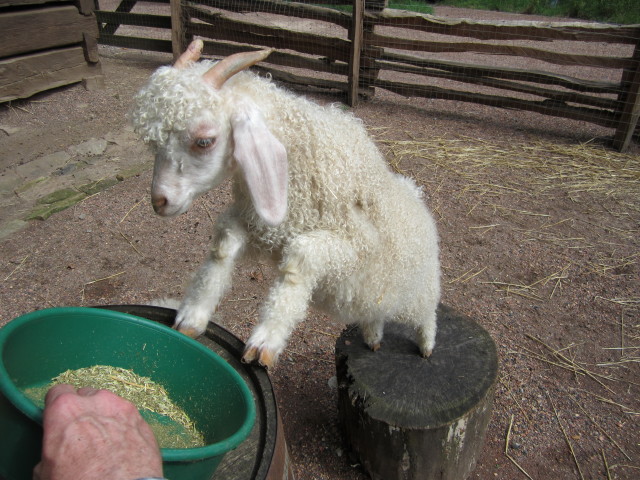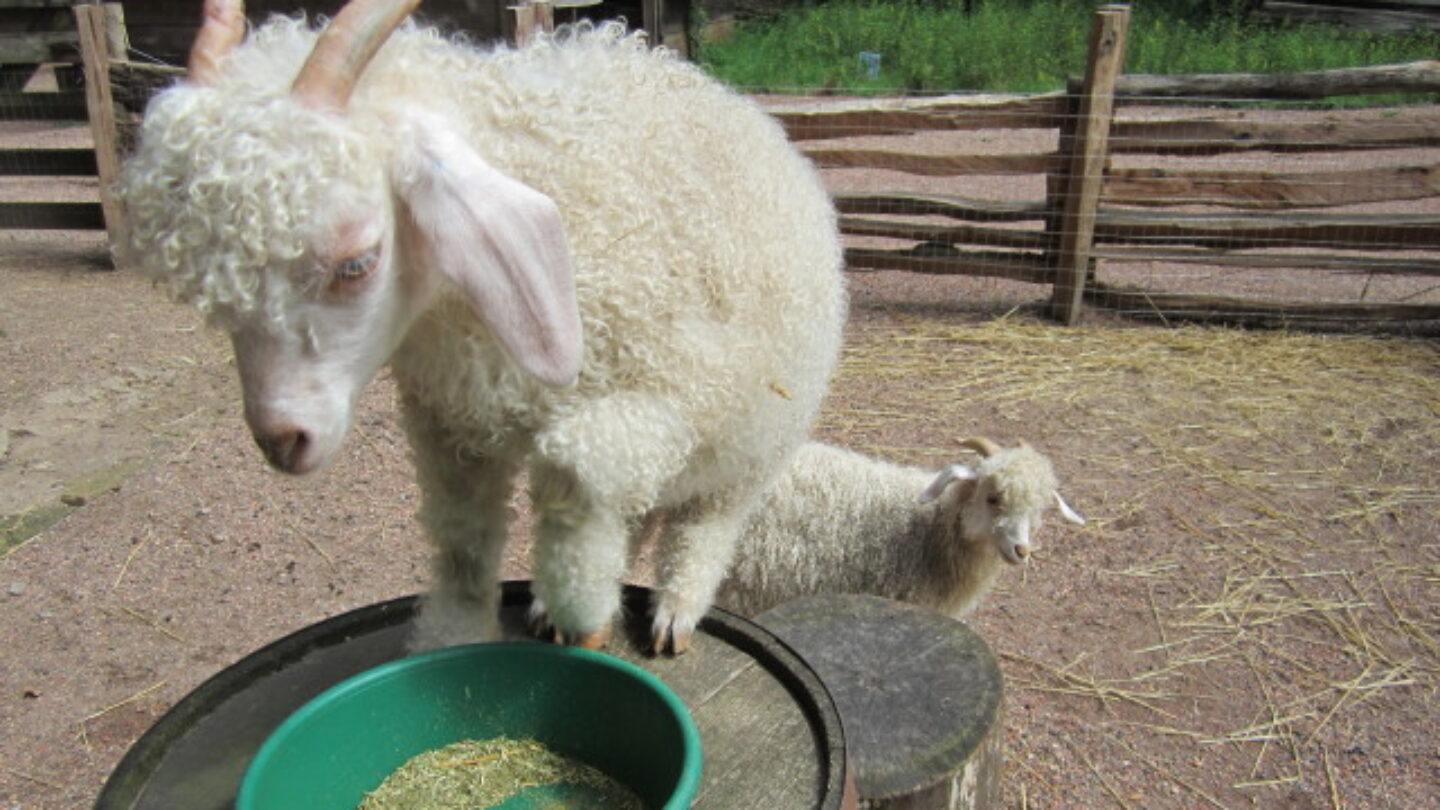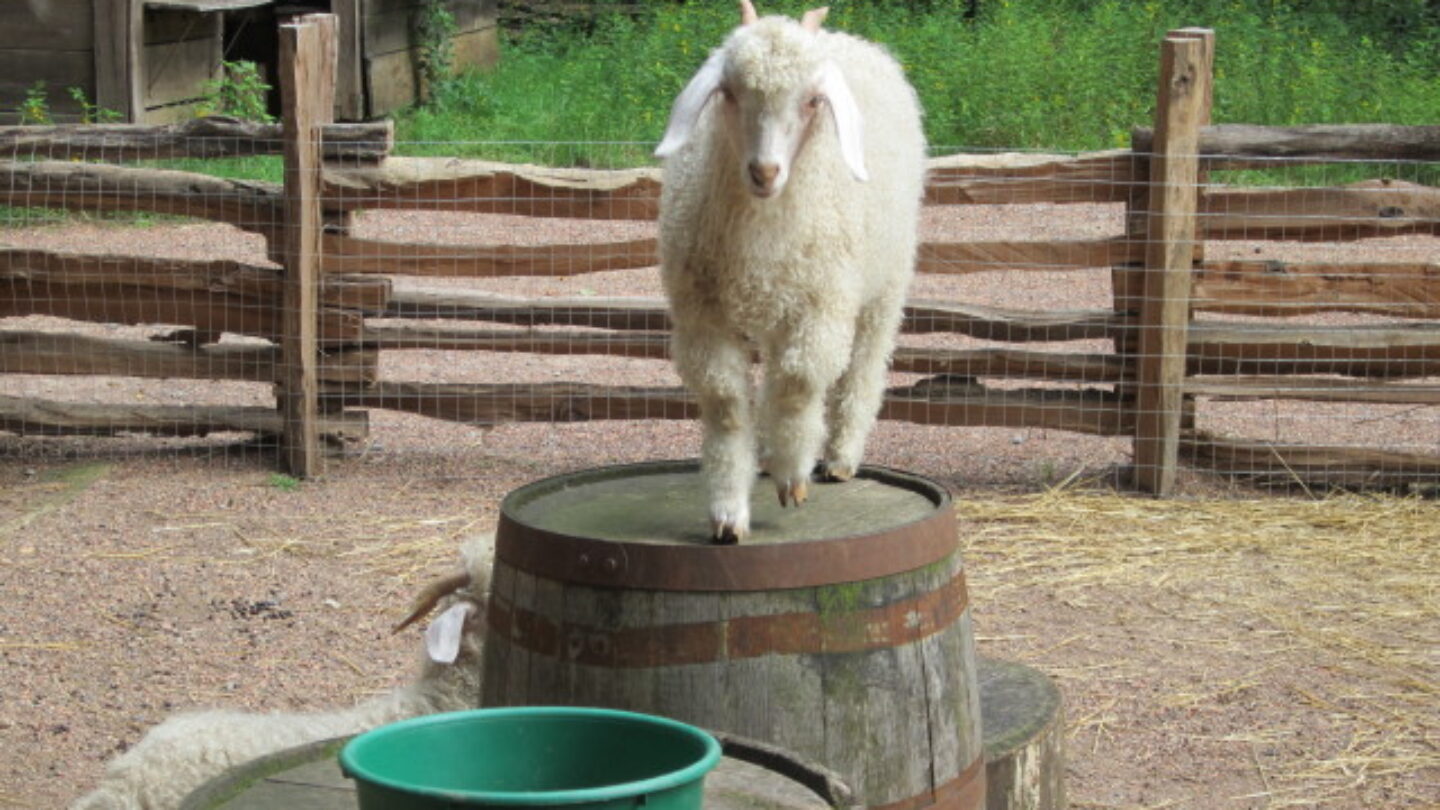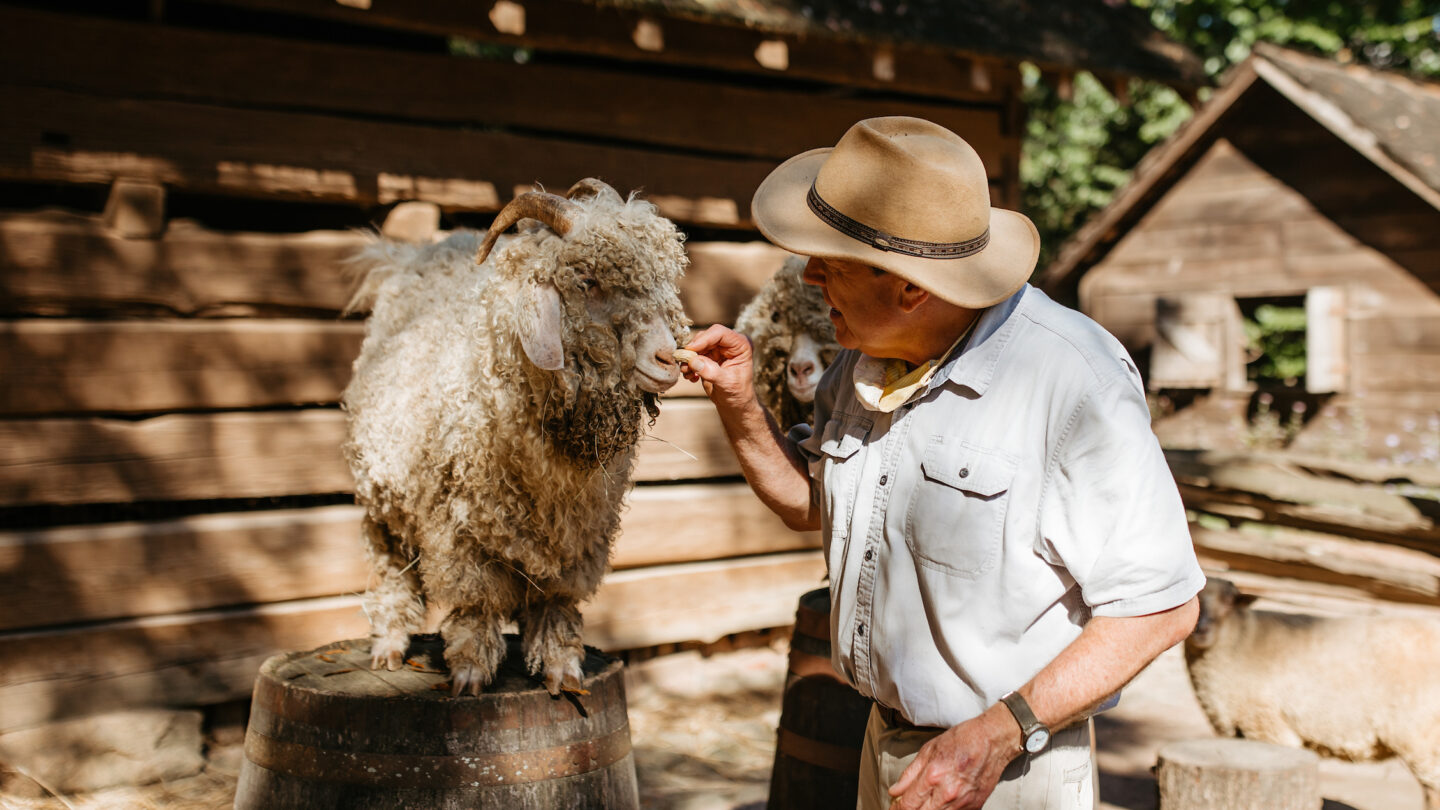
My co-workers could hear the urgency in my voice recently when I said, “We need a new goat stump!” The old one was rotting away at the edges and was no longer fit for use. Nor did I have to explain what the goat stump is—everyone who works with me knows this refers to the stump that sits in the barnyard of the Smith Farm, adjacent to the upright whiskey barrels. It’s a critically important piece of outdoor furniture because Claud and Dorothy, our twin Angora goats, cannot jump up onto the barrels without it! And so, my teammates knew that procuring a replacement goat stump was a high priority.
Claud and Dorothy came to us as kids in 2017. (Please note that since I am a shepherd, when I say “kids” I’m talking about goat children, not human children.) I was excited that I was able to teach Dorothy to hop up onto the barrels the second day we had her. Claud took a bit longer; at first, he was apprehensive about this bit of acrobatics. That might seem to indicate that Dorothy is bolder than her brother, but on the other hand, when I take Claud for a walk, he will confidently cross the quarry bridge, whereas to this day Dorothy will not set one foot on it. They are twins, but with their individual idiosyncrasies.
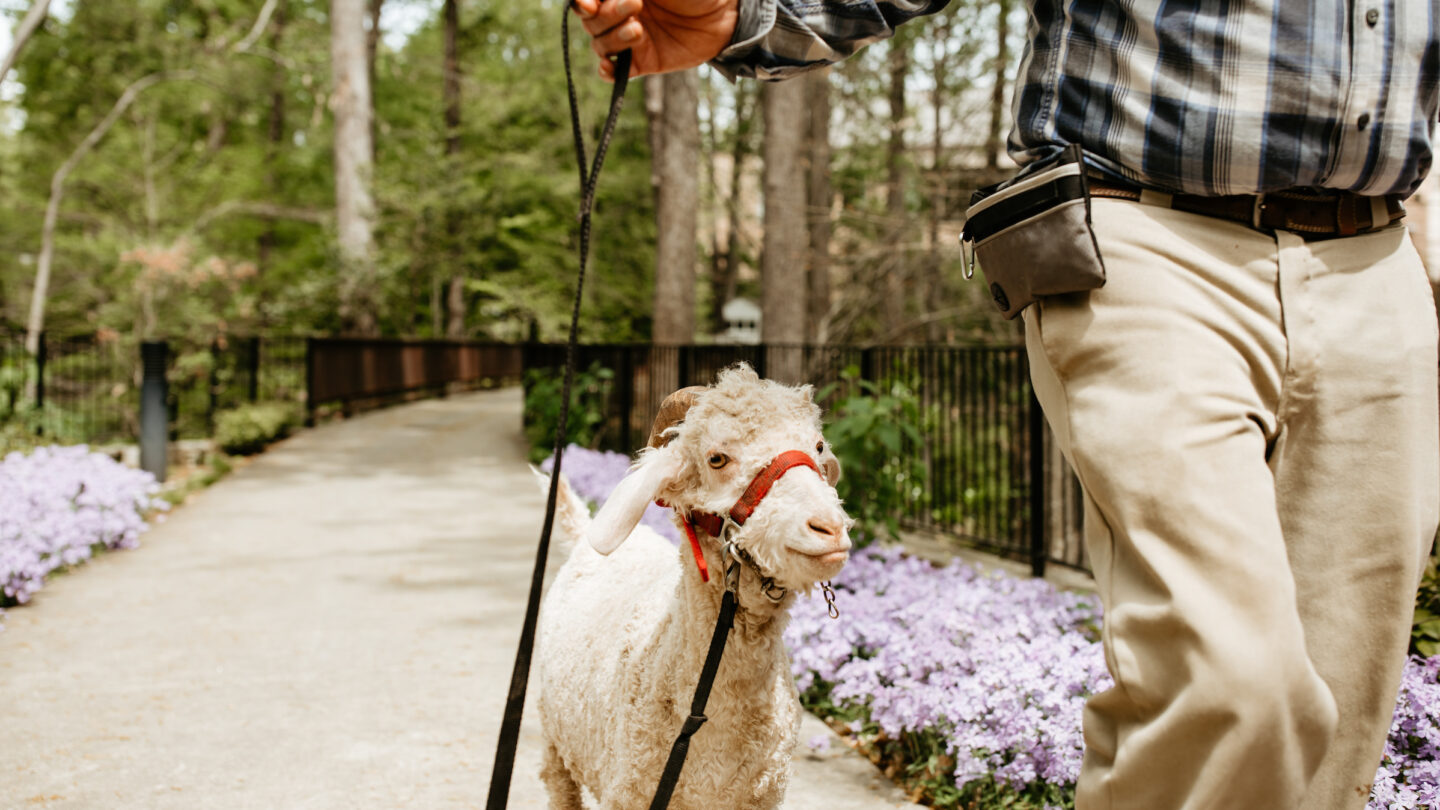
Claud taking a weekend stroll on the quarry bridge.
Training goats to barrel hop is simplified by their extreme food motivation. The initial step those first days Claud and Dorothy came to live with us was to show them a green plastic bowl containing chopped alfalfa. Naturally they were interested and wanted to follow that bowl wherever I put it! When I held the bowl above the stump, Dorothy was first to discover that she had to hop on the stump to enjoy the alfalfa. Next, I put the bowl on top of the barrel adjacent to the stump. Early on, there was a bit of hesitation at this point, but the desire for a treat prevailed, and she jumped to the top of the barrel.
From this point, encouraging a small leap to the second barrel was relatively easy. I left it up to the goats how long they wanted to stay at the high perch, and they learned quickly that to come down they could either jump directly off the barrels or hop down to the stump first if they weren’t feeling so adventurous.
After the first few trials, I simplified things by switching from a bowl of alfalfa to peanuts I held in my hand. Claud and Dorothy love these, eating them shell and all. (And this is Georgia, so there is no shortage of peanuts.)
The technical name for this type of training is operant conditioning, where the animal performs a task and gets a reward. In that sense, it is the opposite of classical conditioning, best known from the often-repeated anecdote of Pavlov’s dog drooling when it heard a bell ring, having learned to associate the ringing with getting its dinner. I can still hear one of my professors in college emphasizing the difference by declaring, “In classical conditioning the environment acts upon the animal, while in operant conditioning, the animal acts upon its environment.” In other words, our goats are jumping on the barrels; the barrels are not jumping on them.
These days I need only to walk into the barnyard, exclaim “Goats on barrels!” and they follow the verbal command without further prompting.
Well—at least they’ll do it if they think I have peanuts. Somehow, they seem to know when I’m not carrying any treats. And that’s when they respond by giving me blank stares as if to say, “No barrel jumping until you make it worth our effort.” But sometimes they will hop on top of the barrels on their own, just for the apparent joy of demonstrating that it is a fine thing to be a goat.
Of course, in any animal training, you must consider the limits biology has imposed on the creature. An African Gray Parrot can be trained to mimic human speech; an angora goat cannot. Less obviously, our sheep can’t be trained to barrel jump, they simply do not have the agility of their barnyard companions.
Often while the goats are on the barrels, however, the sheep will crowd around me, insisting they deserve peanuts too, even though they aren’t doing a ruminant cardio workout. “Okay,” I say, “Here’s a peanut for each of you sheep since I know you’d jump on those barrels if you could.”



